Summary
Have your weight over the talus
Due to the biological reflex, your toes reach the ground first when you jump and land. Trying to avoid this reflex is not easy as it naturally happens.
There's a bone called talus in the middle of ankle which functions to transmits your body weight to your foot.
Have your weight over the talus and you can distribute your weight evenly on your front foot.
Turn slightly to the heelside to shift your weight over the talus
Manual tricks start from approaching.
You can shift your weight over the heelside by turning to the heelside without even thiking about it.
Use that nature and go into a nose manual while turning to the heelside so you can effectively have your weight over the talus bone.
Simulation
Hit the icon to initiate 3d simulation.
Where do you put your weight in a nose manual?
Distribute your weight evenly in a nose manual
You can go straight by evenly applying pressure on your front foot and aligning the board's angle with the front truck's.
Conversely, if you want to turn in one direction, you may lean in that direction and tilt your board in the same direction. So far, no problem, right?
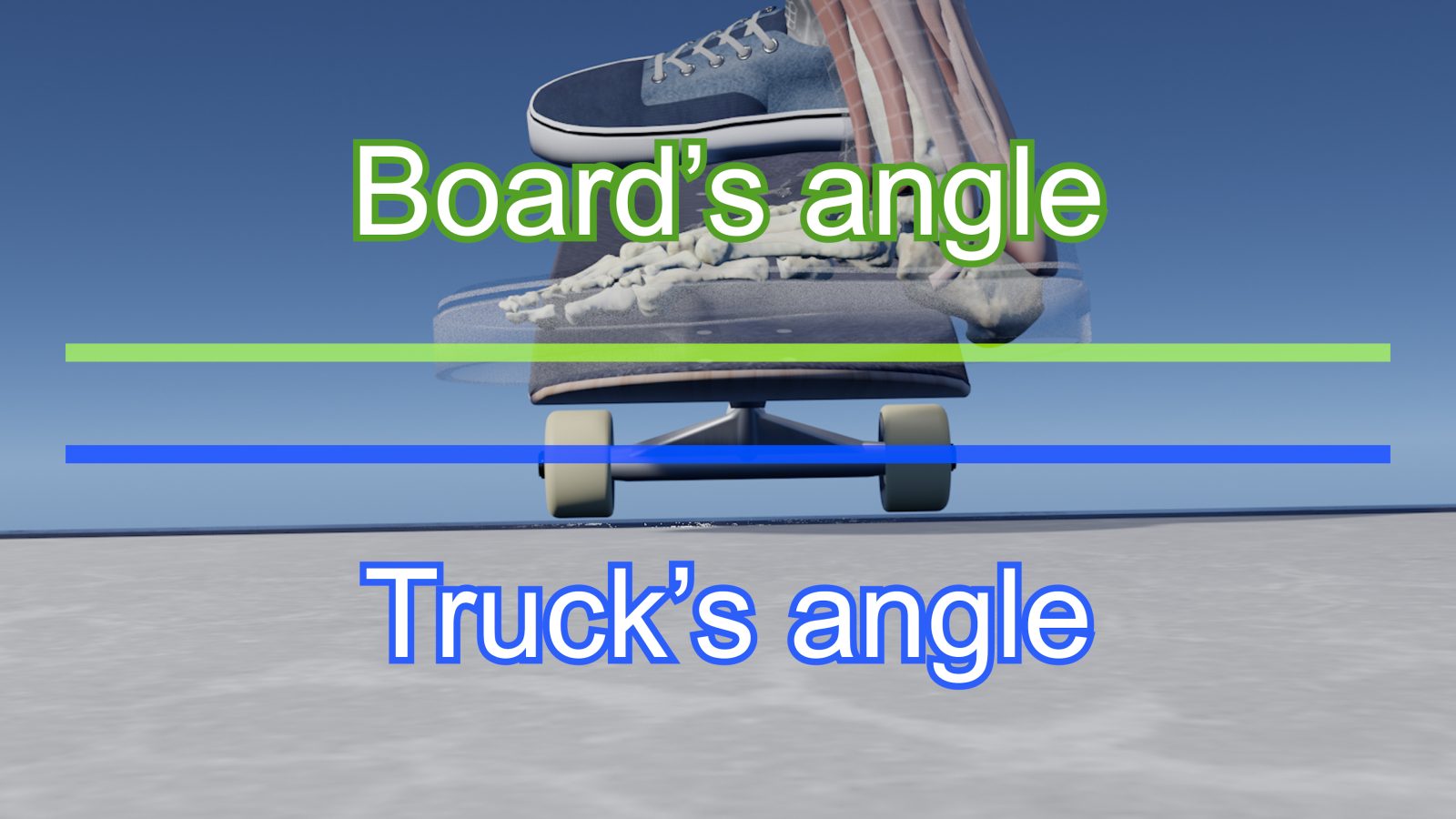
Which part of your body reaches the ground first when you jump and land?
When landing, your weight concentrates on your toe
Generally, humans land on their toes first. By jumping, a body gains downward energy. And it tries to absorb such energy by landing on the toes and stretching the calves.
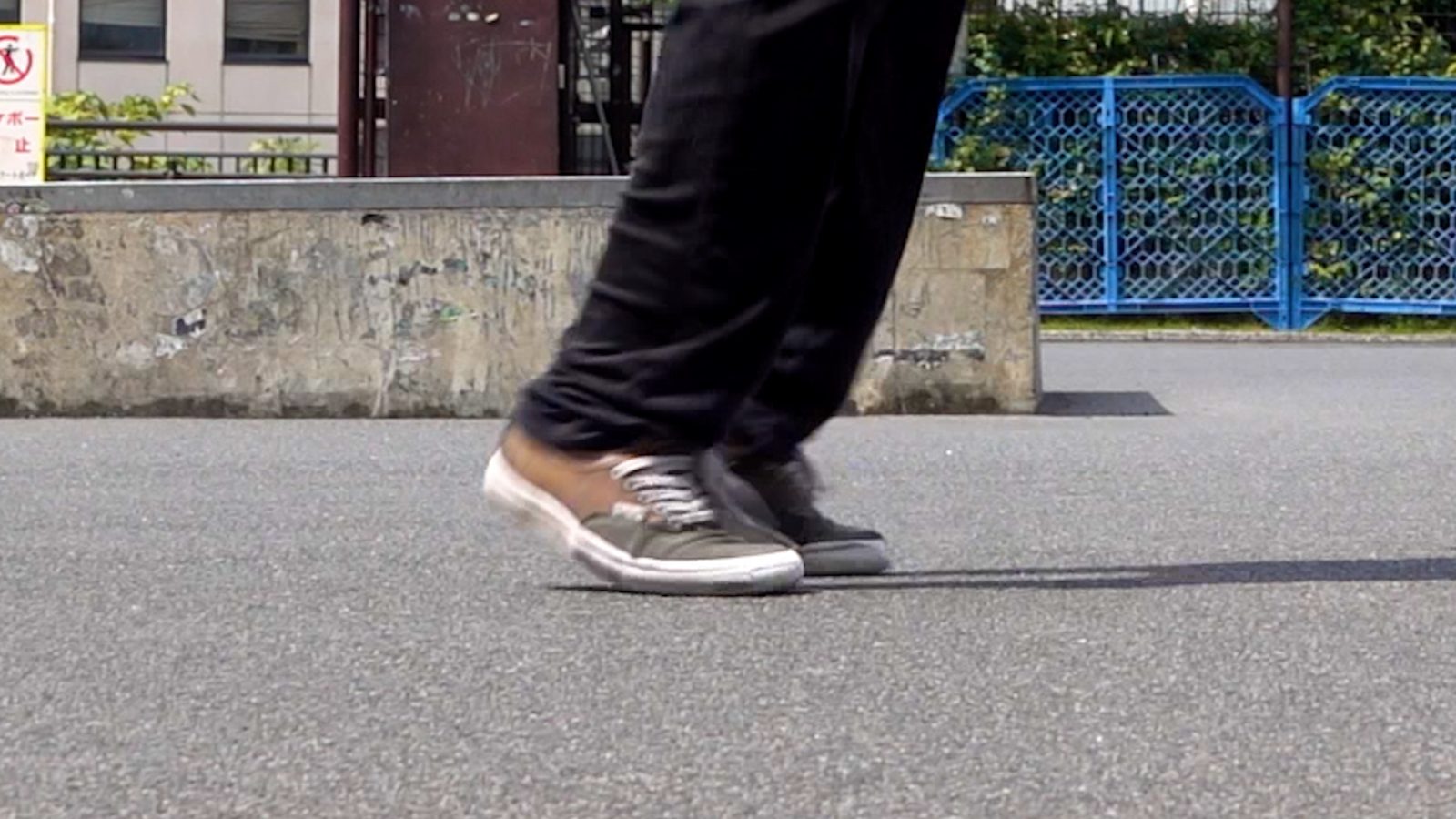
Toe lowers due to physiological reflex
This is precisely what makes a nose manual challenging. While you should apply a horizontal force to the nose to balance it, you tend to land on your toe reflexively.
Moreover, since this is a physiological reflex, flattening your foot when landing isn't easy.
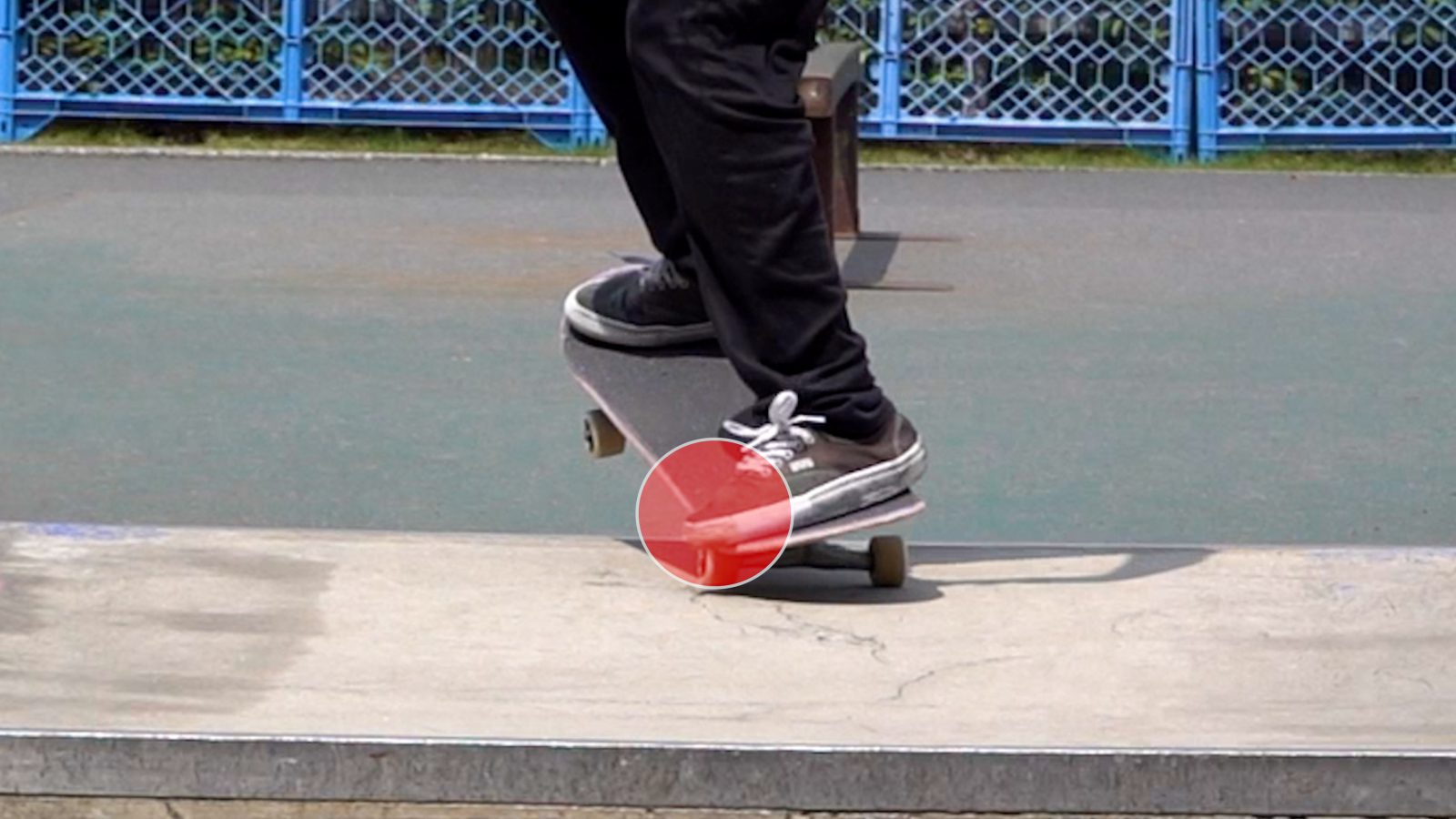
Where should you place your foot in nose manuals?
If your toe tends to land first, should you place it over the front truck? No. If you place your weight on a "spot," balancing will become more challenging.
The energy generated when landing will continue to push your weight down even after your toe touches your board. If this force deviates even slightly towards the heel side, it will push your board down in that direction, causing you to lose balance.
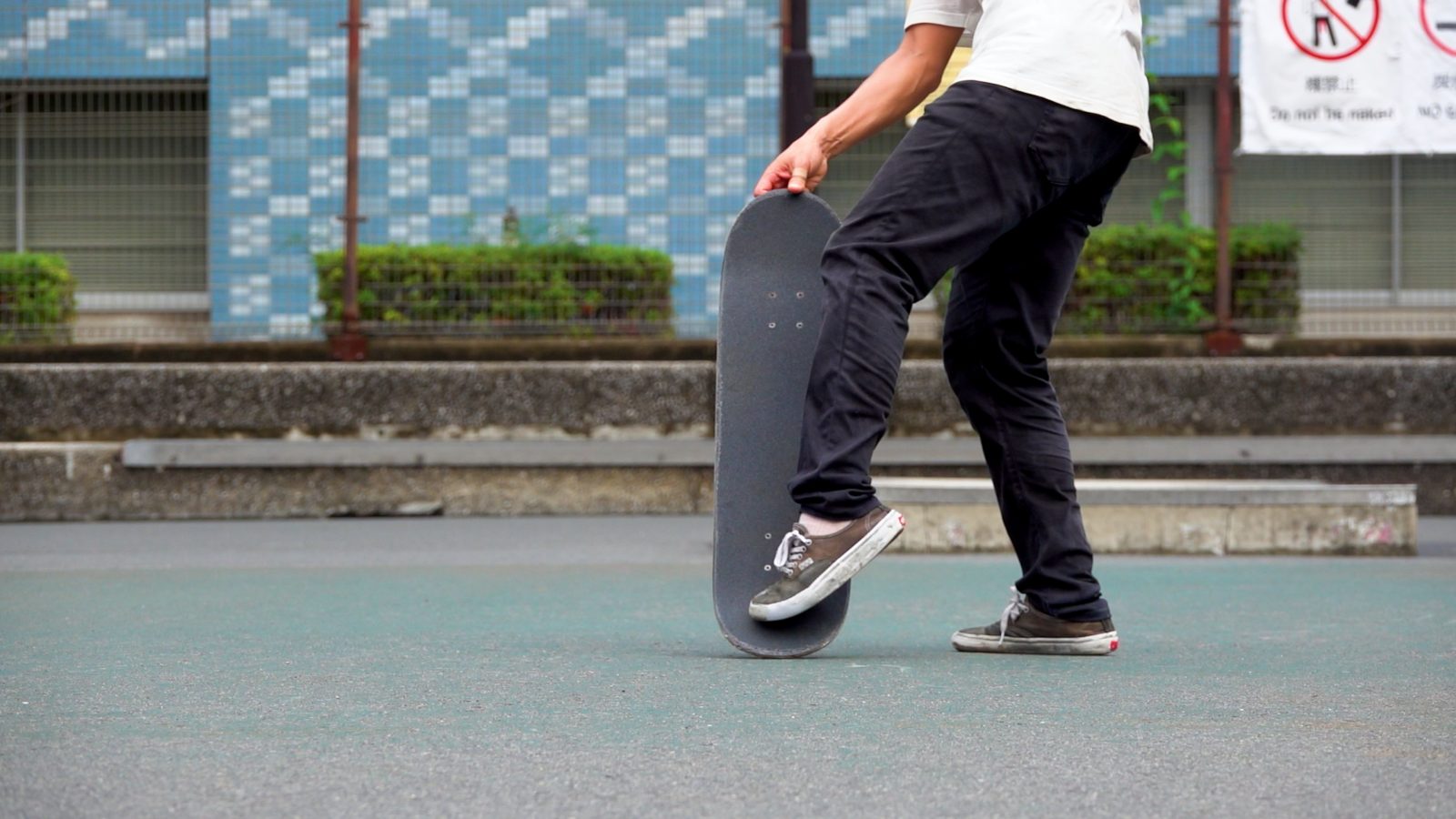
Impact of placing front foot flat on the nose
For the reasons mentioned above, you should place your front foot on the nose flatly so it covers the entire nose.
By doing so, your toe gets closer to the edge of the nose. In addition to this foot placement, when the physiological reflex that the toe lands first kicks in, you might pressurize the nose too much and fall over.
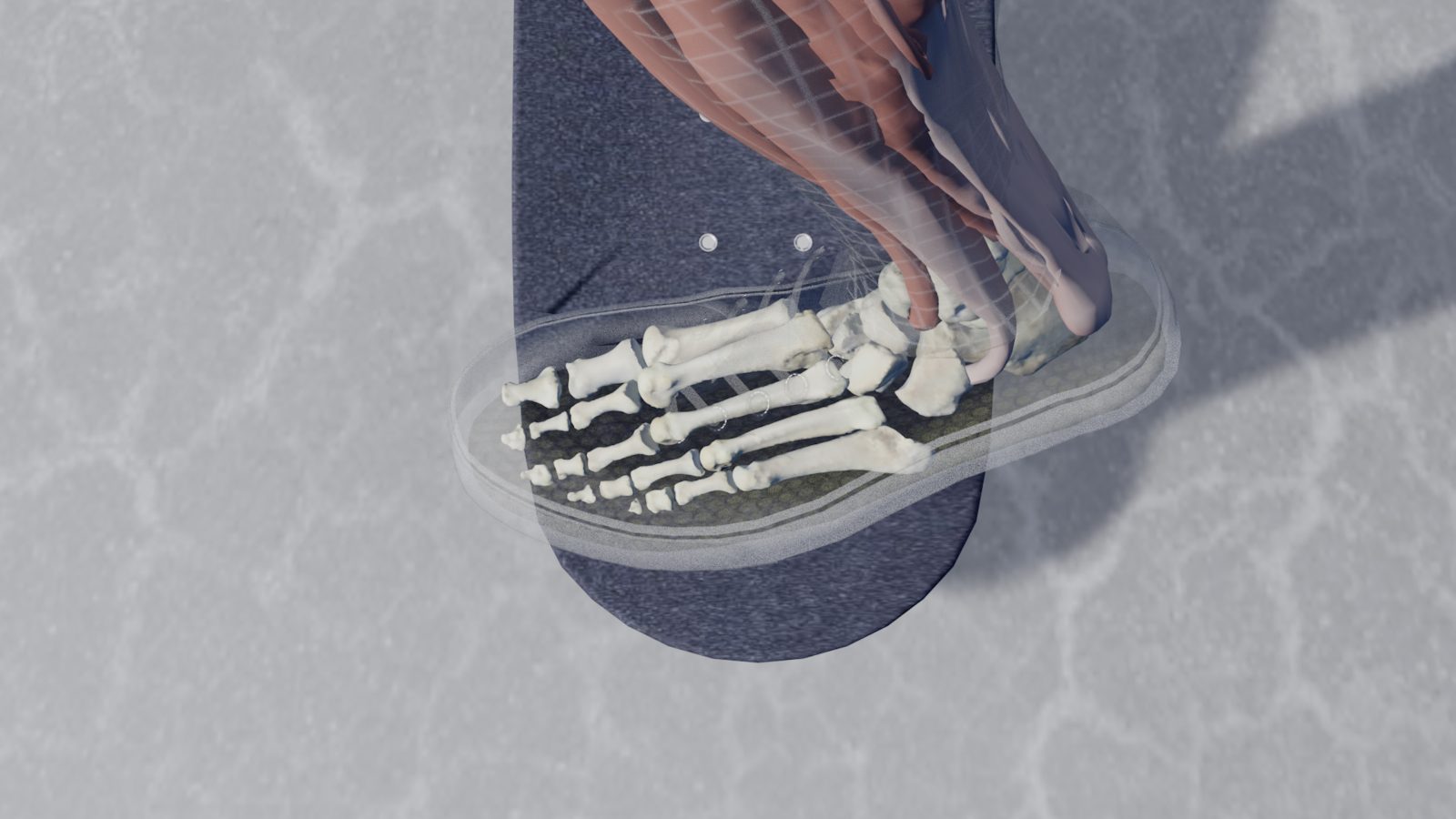
How to level your board flat
Anatomy of an ankle
To solve the problem you pressurize the nose too much, let's first look at the structure of the ankle.
There is a bone called the talus in the center of an ankle. This bone plays a vital role as it transmits the body weight to the foot and functions as the fulcrum to rotate the ankle.
Theoretically, if there was no foot, the most effective way to support your body weight would be to have the talus directly above the truck.
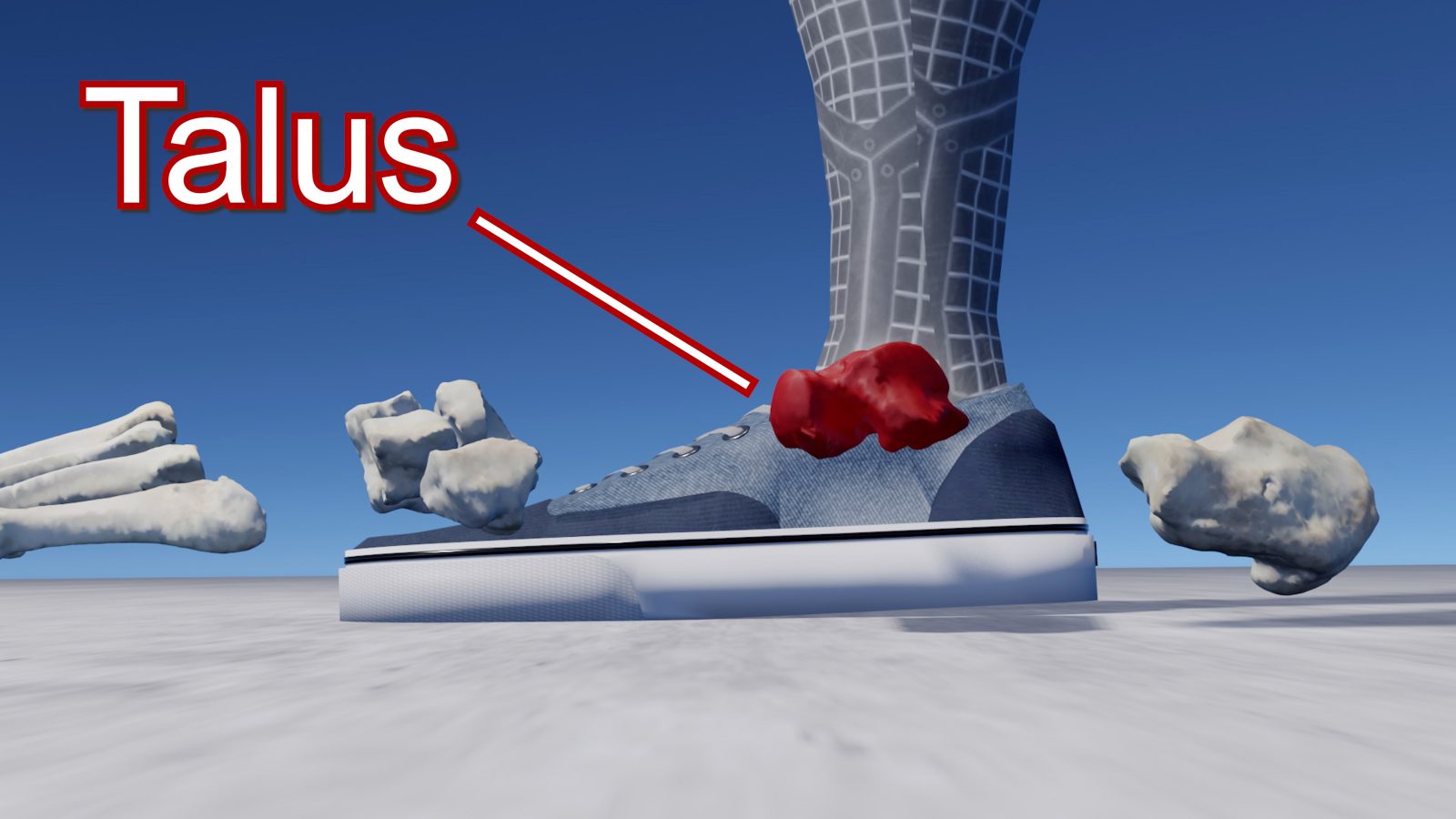
Biological reflexes are inevitable
In reality, it is your toe that usually touches the nose first due to the reflex, meaning the toe eventually pushes the nose down, and you have to find a way to counter it somehow.
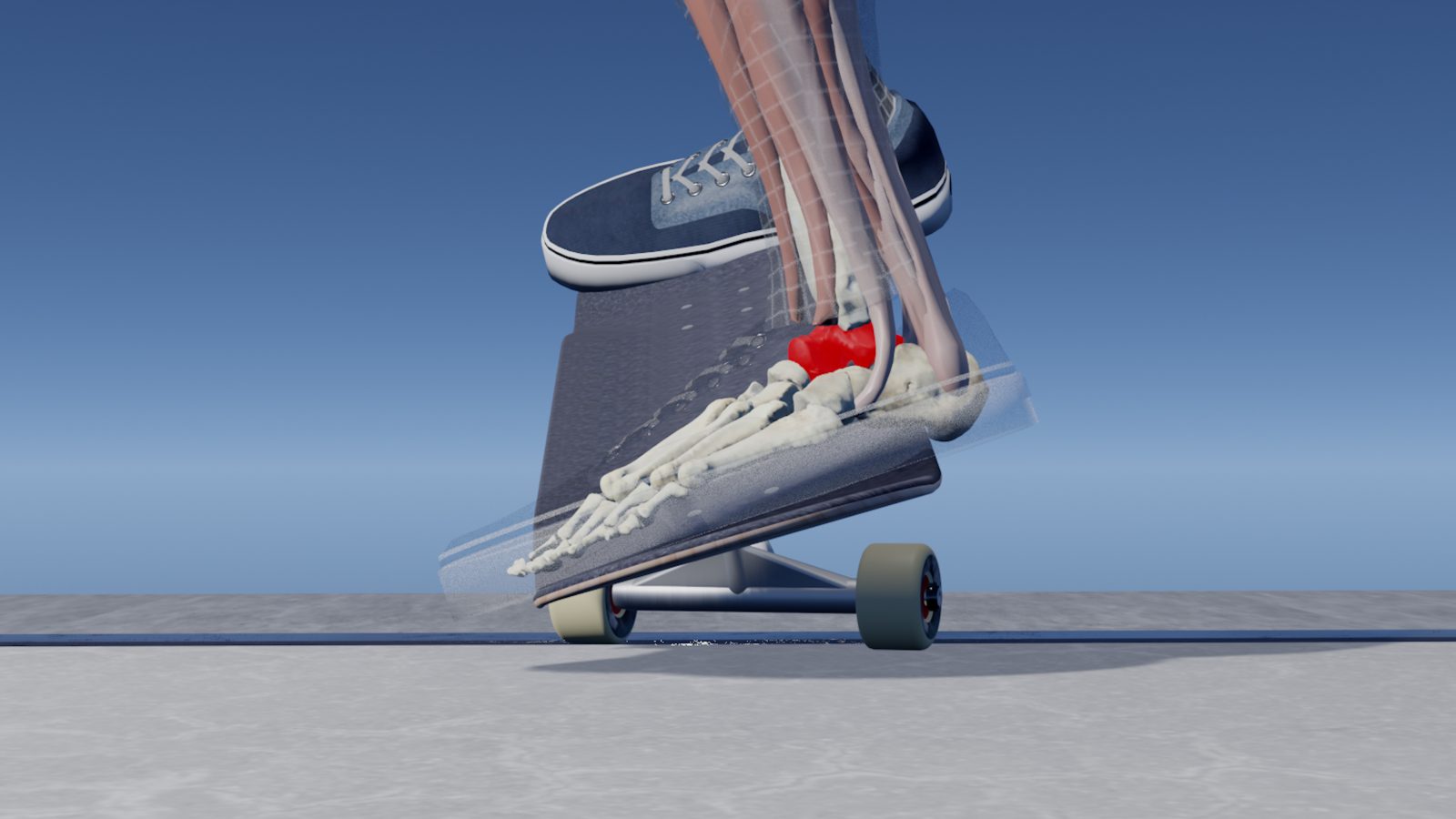
Place the talus bone near the bolts offset the toes' force
To offset the force of the toe lowering the nose, move your weight straight above the talus.
Then, although your toe touches the nose first, you will transfer your weight on your heel, push your board to the heel side, and level it.

Crux of nose manuals
Where should you place the talus bone?
In most cases, the talus should be placed close to the bolts, but you have to adjust it depending on your foot size.
The most important thing is to level the board's angle by evenly distributing your weight on the toe and heel sides. Adjust the position and angle of the talus bone depending on your foot size and weight.

Your weight will be on the toe side if you lean forward
Another vital part is that even if the talus bone is in the right place, balancing becomes difficult if you lean too far forward. Because you will be putting more weight on the toe side by leaning forward and eventually land on the toe side upon locking into a manual.
In that sense, a manual trick starts from approaching, and you have to be ready to move your weight above the talus throughout the trick.

Common mistakes and solutions in nose manuals
Avoid leaning to the toe side while approaching
Theoretically, it would be best if you kept your body axis straight. But sometimes, you can't help leaning forward when trying an unfamiliar trick.
At such times, try going into a nose manual while lightly turning to the heel side. While turning towards the heel side, your weight is also on the heel side, which should help you move your weight above the talus.
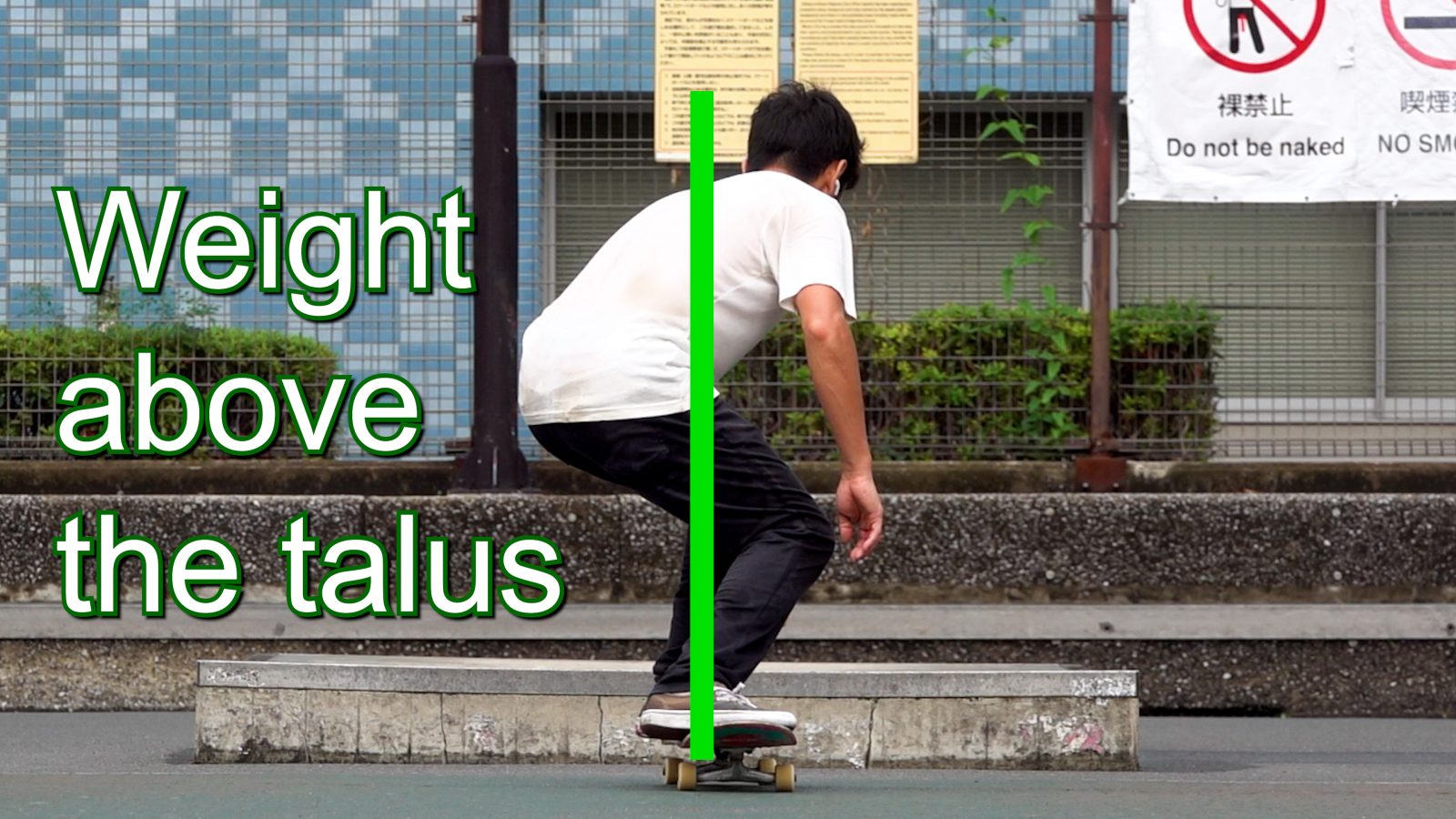
Avoid jumping too high
In many cases, you don't need to pop so high; you only need to let the front wheels get over the obstacle you are trying to do a manual.
If you jump too high, the downward force when landing will increase, making it easier to lose balance.
To figure out how hard you have to pop, try standing next to the obstacle you are skating on and pop the tail. If the front wheels get over the obstacle, it's as much as you need to pop. Generally, you should find you don't have to pop so much.
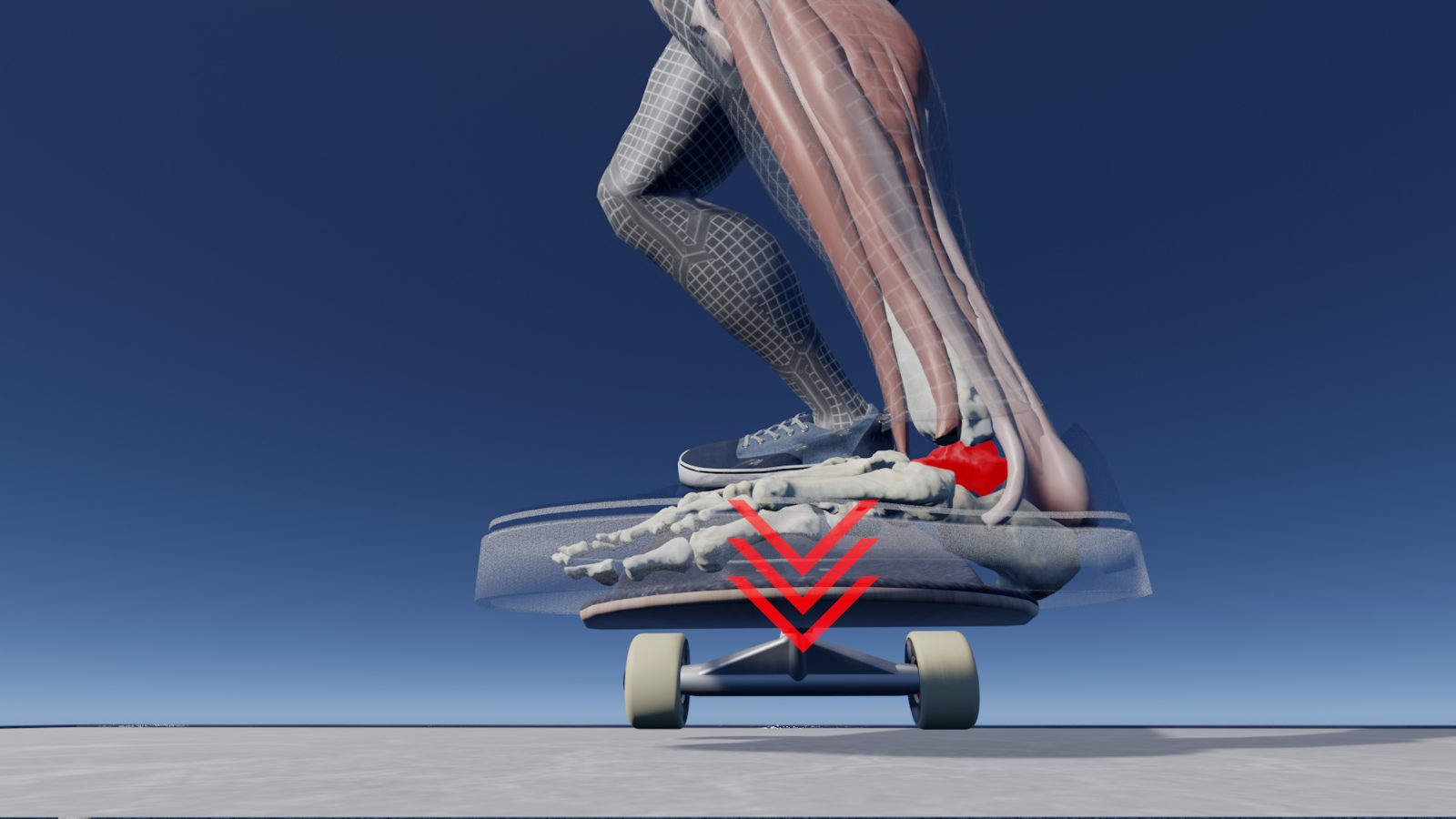
Keep your knees loose throughout the trick
By keeping your knees loose, you can use your knees and ankles to absorb the downward force upon landing. As before, make sure to move your weight directly above the talus bone when landing.


 Convert your video into 3D
Convert your video into 3D Facebook
Facebook Twitter
Twitter

